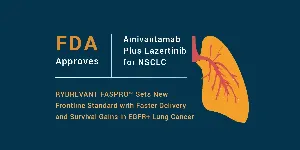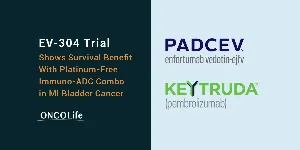Beyond SEP-1: Evolving Strategies in Sepsis Care and CMS Reimbursement Policies


Opinion |
13 November 2023
Despite significant medical advances and treatment options, why does sepsis remain a major health issue, causing numerous fatalities? Early identification of sepsis in patients is crucial but defining sepsis is not easy. We see this in the disagreements among our multiple health professional societies due to their broad differences in the interpretation of sepsis. While public health professionals are eager to categorize this syndrome into specific defined terms to establish a comprehensive approach in the treatment of sepsis, the broad range in how this syndrome comes about is too variable amongst patients.
In the United States sepsis impacts more than 1.7 million adults who receive hospital care each year. One in three patients who die in a hospital have sepsis.1 Sepsis is a syndrome in which our body has an extreme immune response to infection that leads to inflammation throughout the body that can cause tissue damage, organ failure and even death.2 The treatment for sepsis is to start antibiotics as soon as possible, intravenous fluid to maintain blood flow to organs, and any other necessary supportive care.
For reimbursement by the Centers for Medicare and Medicaid Services (CMS) hospitals are required to follow a sepsis treatment bundle. This national quality sepsis measure is known as SEP-1 and is a federal regulation that stemmed from the 2003 Surviving Sepsis Campaign (SCC). Its goal is to standardize care among all hospitals, regardless of size, for the most common disease processes, including sepsis.3 Failure to meet any one item in this sepsis bundle under SEP-1 means overall failure and no reimbursement by CMS.
This creates required check boxes providers must check off anytime a septic patient presents even if the provider’s clinical judgment deems them unnecessary. Here lies the controversy with SEP-1 in its requirement to administer antibiotics within three hours for all patients presenting with possible sepsis and how it contributes to unintended consequences such as antimicrobial overuse.
When patients present with sepsis, they are treated empirically with broad-spectrum antibiotics to cover all likely causes of infection if the source is not known. Most recently multiple societies, including IDSA/ACEP/PIDS/SHEA/SHM/SIPD, came together and released a joint position paper on their concerns with SEP-1.4 Their joint recommendation is to retire SEP-1 regarding how it qualifies reimbursement by CMS and shift to new sepsis metrics with patient outcomes as the emphasis. CMS is currently creating a community-onset sepsis 30-day mortality electronic clinical quality measure (eCQM) that identifies sepsis using systemic inflammatory response syndrome (SIRS) criteria, antibiotic administrations or diagnosis codes for infection or sepsis, and clinical indicators of acute organ dysfunction.
The collective recommendation by these societies supports eCQM but recommends removing SIRS criteria and diagnosis codes. They believe this removal will minimize the variability between hospitals, maintain vigilance for septic patients who may not have SIRS, and avoid empiric antibiotic use in uninfected patients with SIRS.
As a certified antimicrobial stewardship pharmacist, the overuse of antimicrobial drugs in the United States is alarming. We are seeing in healthcare the substantial increase in infections that have grown resistant to the mechanisms at which our current antibiotic arsenal targets. As stewards in healthcare, we must balance our responsibility to reserve this arsenal for as long as we can by being judicious in our prescribing of empiric antimicrobials with our ethical responsibilities in the treatment of our infected patients.
Multiple studies have failed to demonstrate that other SEP-1 requirements such as fluid boluses and repeat lactate laboratory measurements have reduced sepsis mortality.5,6,7
SIRs criteria do not always indicate sepsis as shown in that up to 50% of patients hospitalized will have SIRs criteria at some point during their admissions.8 So, eliminating this from SEP-1 makes sense. Also, it has been demonstrated that after the release of SEP-1 there was increase in the broad-spectrum antimicrobials in hospitalized patients.9
Why are our health systems in the United States struggling in combating sepsis?
There is controversy in how we define sepsis, for one. The presentation of this syndrome is too vast to put a treatment bundle in place and expect it to be a one-size fits all remedy. As CMS revisits and updates its sepsis requirements for reimbursement of healthcare, we implore them to look at the data. If the data does not show a decrease in mortality and can potentiate antimicrobial resistance, we must adjust requirements for hospitals to receive reimbursement for the treatment they are providing for patients.
Reimbursement is critical for healthcare systems to not only keep their doors open but also to invest in the technology and medicine necessary to provide the best care to our patients. What is the answer? Let the reimbursement be tied to overall patient outcomes and not in checking off all the boxes of a one-size-fits- all bundle. The payers, like CMS, may even save money by eliminating this bundle requirement. If a patient presents with SIRS and it is not sepsis they do not need antibiotics all the time.
Required labs in the bundle may not be necessary in every patient case. CMS should change their reimbursement for sepsis to a value-based program that ties the amount providers earn for their services to their performance of quality measures. CMS is moving in the right direction because they have already implemented this in End-Stage Renal Disease, a Hospital Readmission Reduction Program, a Hospital Acquired Conditions Reduction Program, etc. With value-based care, providers will be held more accountable for improving their patients' outcomes but also given more freedom to deliver the best care needed at that time for each individual patient.
- National Center for Emerging and Zoonotic Infectious Diseases (NCEZID), Centers for Disease Control and Prevention, Division of Healthcare Quality Promotion (DHQP) CDC Data and Reports, 2016. Cited August 23, 2016. Available at: https://www.cdc.gov/sepsis/datareports/index.html
- Centers for Disease Control and Prevention. What is Sepsis? (https://www.cdc.goc/sepsis/index.html) Accessed 11/12/2023.
- Faust JS, Weingart SD. The Past, Present, and Future of the Centers for Medicare and Medicaid Services Quality Measure SEP-1: The Early Management Bundle for Severe Sepsis/Septic Shock. Emerg Med Clin North Am. 2017 Feb;35(1):219-231. doi: 10.1016/j.emc.2016.09.006. PMID: 27908335.
- Chanu Rhee, Jeffrey R Strich, Kathleen Chiotos, David C Classen, Sara E Cosgrove, Ron Greeno, Emily L Heil, Sameer S Kadri, Andre C Kalil, David N Gilbert, Henry Masur, Edward J Septimus, Daniel A Sweeney, Aisha Terry, Dean L Winslow, Donald M Yealy, Michael Klompas, Improving Sepsis Outcomes in the Era of Pay-for-Performance and Electronic Quality Measures: A Joint IDSA/ACEP/PIDS/SHEA/SHM/SIDP Position Paper, Clinical Infectious Diseases, 2023;, ciad447, https://doi.org/10.1093/cid/ciad447
- Townsend SR, Phillips GS, Duseja R, et al. Effects of compliance with the early management bundle (SEP-1) on mortality changes among medicare beneficiaries with sepsis: a propensity score matched cohort study. Chest 2022; 161:392–406.
- Baghdadi JD, Wong MD, Uslan DZ, et al. Adherence to the SEP-1 sepsis bundle in hospital-onset v. community-onset sepsis: a multicenter retrospective cohort study. J Gen Intern Med 2020; 35:1153–60.
- Seymour CW, Gesten F, Prescott HC, et al. Time to treatment and mortality during mandated emergency care for sepsis. N Engl J Med 2017; 376:2235–44.
- Churpek MM, Zadravecz FJ, Winslow C, Howell MD, Edelson DP. Incidence and prognostic value of the systemic inflammatory response syndrome and organ dysfunctions in ward patients. Am J Respir Crit Care Med 2015; 192:958–64.
- Amy L Pakyz, Christine M Orndahl, Alicia Johns, David W Harless, Daniel J Morgan, Gonzalo Bearman, Samuel F Hohmann, Michael P Stevens, Impact of the Centers for Medicare and Medicaid Services Sepsis Core Measure on Antibiotic Use, Clinical Infectious Diseases, Volume 72, Issue 4, 15 February 2021, Pages 556–565, https://doi.org/10.1093/cid/ciaa456











Comments
No Comments Yet!